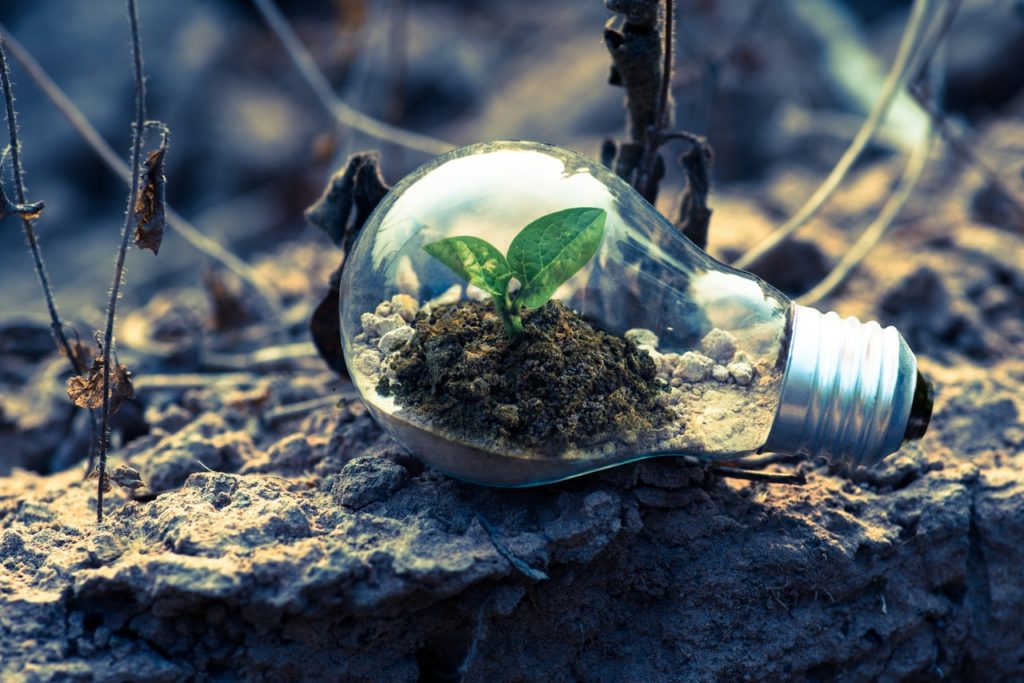Photosynthesis is the process by which light energy is used to catalyse the oxidation of water, essentially splitting water molecules and producing hydrogen ions, oxygen and electrons. These products are transferred through intermediators to produce organic carbon compounds, mostly carbohydrates (sugars), in a process called carbon fixation (Blankenship 2014). This is a very basic summary of a complex process which involves many enzymes and complexes through both the light-dependant and dark reactions centres to produce energy which is stored as sugars (Whitmarsh 1999, Buchanan 2016).
One of the most defining events in the history of Earth is the emergence of photosynthetic organisms. This started a cascade which ultimately changed the composition of the air, renewed the natural fauna and ramped up production of the highly reactive and toxic element oxygen. When these organisms first evolved, the ratio of CO2 to oxygen was vastly different and is almost completely opposite to what we see on Earth today (Beerling 2012). This is important because in a CO2 rich atmosphere, the chemistry which enables photosynthesis did not have to be highly specific to bind CO2. However, as the composition of the atmosphere changed due to continual uptake of carbon dioxide and production of oxygen from photosynthetic organisms, it affected the efficiency of the process (Lowe and Tice 2004).
Efficiency

Nowadays, photosynthesis (particularly in C3 plants such as cannabis) is not as efficient a process as one may assume. The central catalytic enzyme for carbon fixation, rubisco, is well known for its promiscuity, and in many species rubisco binds oxygen at roughly the same efficiency as carbon dioxide, leading to photorespiration – an energetically negative pathway. However, optimising rubisco by increasing the availability to inorganic carbon has been modelled in crops and is predicted to increase yields by up to 60% (Long et al., 2016).
In some cases, simply elevating the ambient CO2 levels can increase yields by 30% (Poorter 1993, Kimball 1983). This clearly demonstrates that the photosynthetic process at current ambient CO2 Levels is less effective than it could otherwise be, probably a result of the difference in CO2 levels now compared to when photosynthesis first evolved where atmospheric CO2 could have been as high as 10%, currently 0.04% (400ppm) (Lowe and Tice 2004).
At maximum efficiency 90% of a plants dry biomass is derived from photosynthetic CO2 capture, thus there is a very tight correlation between the yield of a crop and the sequestration of CO2 (Zelitch 1975, Zelitch 1982). This is evident throughout a plant’s life cycle and the effects of elevated CO2 can be seen from the seedlings through to the mature plant, in both temporary short term and consistent long-term exposure to elevated CO2 (Kimball 1983).
Elevating levels of CO2 will encourage extra growth only when other limiting factors are abundant. Therefore, for example when other nutrients, light or temperature are limited, elevating the CO2 will have minimal effect (Poorter and Perez-Soba 2001). In addition to this, Minorsky 2002 showed that the effects of elevating CO2 can be variety-specific and not all cultivars will react the same if all else is equal.

In cannabis, an interesting study from 2008 compared temperature, light intensity and CO2 levels to uncover the most optimal criteria for indoor cultivation, particularly in terms of pharmaceutical cannabinoid production. The study showed that the overall productivity of photosynthesis was increased at elevated CO2 levels when all other parameters were optimal, and was measured by water use efficiency, intercellular CO2 and ratio of ambient CO2 to intercellular CO2 amongst other parameters (Chandra et al 2008).
The authors concluded that under optimal light and temperature, cannabis species respond positively to elevated levels of CO2, and 0.07% CO2, increased the photosynthetic rate by 44% (Chandra et al 2008, Chandra et al 2011). Furthermore, as the CO2 levels increase, so does the photosynthetic output. This is fairly self-evident, but what is less obvious is the maximum levels at which one can increase CO2 before it has little or no further effect. If, like temperature and light intensity, there is a saturation point beyond which the effects can then become negative, then staying under that limit is crucial.
Maximum Overdrive

As extensive work by Chandra and colleagues has shown, increases of up to 0.075% CO2 can increase net photosynthesis, however the work does not explore levels over this range. In other species CO2 levels of up to 0.2% (2000ppm) has been shown to improve the photosynthetic rate and increase yields (Silvola 1990, Hutchins et al 2007).
In Contrast, a recent study has shown that at over 0.09% (900ppm) CO2 effects start to taper and may not provide further gains in the long term (Drag 2020). Based on the cultivation set-up in many successful licensed producers and experienced cannabis growers, although anecdotal, the advice states optimal CO2 levels are in the range of 0.12-0.2% CO2 (1200-2000ppm).
However, optimisation on all fronts is key and small increases in CO2 will still show pronounced effects and so each cultivar, grow environment, feed system, and light set-up will need to be individually optimised in order to attain the maximum affects. In general, any supplemental CO2 will help with cultivation/yield optimisation, but there is no substantial difference at the high end and up to 0.1% (1000ppm) (Canadell et al 2007) would suffice in providing further gains.